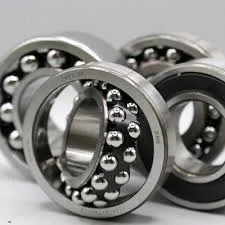
Oct . 30, 2024 16:07 Back to list
taper roller bearing fitting
Understanding Taper Roller Bearing Fitting
Taper roller bearings are a crucial component used in various machinery and automotive applications. Renowned for their ability to handle both radial and axial loads, these bearings play a significant role in ensuring smooth and efficient operation. However, the performance of taper roller bearings largely hinges on their proper fitting and installation.
The design of taper roller bearings consists of an inner ring, outer ring, and conical rollers. The unique geometry allows for optimal load distribution and minimizes friction during operation. However, the effectiveness of these bearings can be compromised if they are not installed correctly. Proper fitting involves several considerations to ensure longevity and performance.
Understanding Taper Roller Bearing Fitting
2. Correct Alignment Alignment is pivotal when fitting taper roller bearings. Misalignment can cause uneven loading, leading to early deterioration of the bearing. To achieve correct alignment, the components should be carefully positioned and adjusted. Using precision tools such as dial gauges can help ensure that the inner and outer rings are aligned properly.
taper roller bearing fitting

3. Application of Proper Force During installation, appropriate force must be applied to avoid damage. Depending on the bearing size and application, different methods can be used for fitting. For instance, mechanical press-fitting is common for larger bearings, while smaller bearings may be tapped gently into place. It is crucial to apply force evenly to avoid introducing stress or deformation.
4. Maintaining Right Clearance The fit of taper roller bearings is vital for their functionality. Proper clearance between the rollers and raceways must be maintained to allow for thermal expansion and load variations. Manufacturers often provide specifications for the optimal clearance needed, which should be adhered to during installation.
5. Lubrication Lastly, appropriate lubrication is essential for the effective functioning of taper roller bearings. Choosing the right lubricant and ensuring it is evenly distributed during installation can prevent excessive wear and overheating.
In summary, the fitting of taper roller bearings requires careful consideration of several factors. Proper preparation, alignment, application of force, maintenance of clearance, and lubrication are all crucial to ensuring that these bearings perform optimally and have a long service life. By following these guidelines, one can enhance the performance and reliability of taper roller bearings in various applications.
Latest news
-
Premium Deep Groove Ball Bearings | High Speed & Reliability
NewsAug.29,2025
-
Durable Scaffolding Clamps - Secure & Reliable Tube Connectors
NewsAug.28,2025
-
Common Failures in Thrust Ball Bearings and Solutions
NewsAug.22,2025
-
How Tapered Roller Bearings Can Take Shock Loads
NewsAug.22,2025
-
Angular Bearings in High-Precision Spindles
NewsAug.22,2025
-
The Impact of Misalignment on Cylindrical Roller Bearing Performance
NewsAug.22,2025
